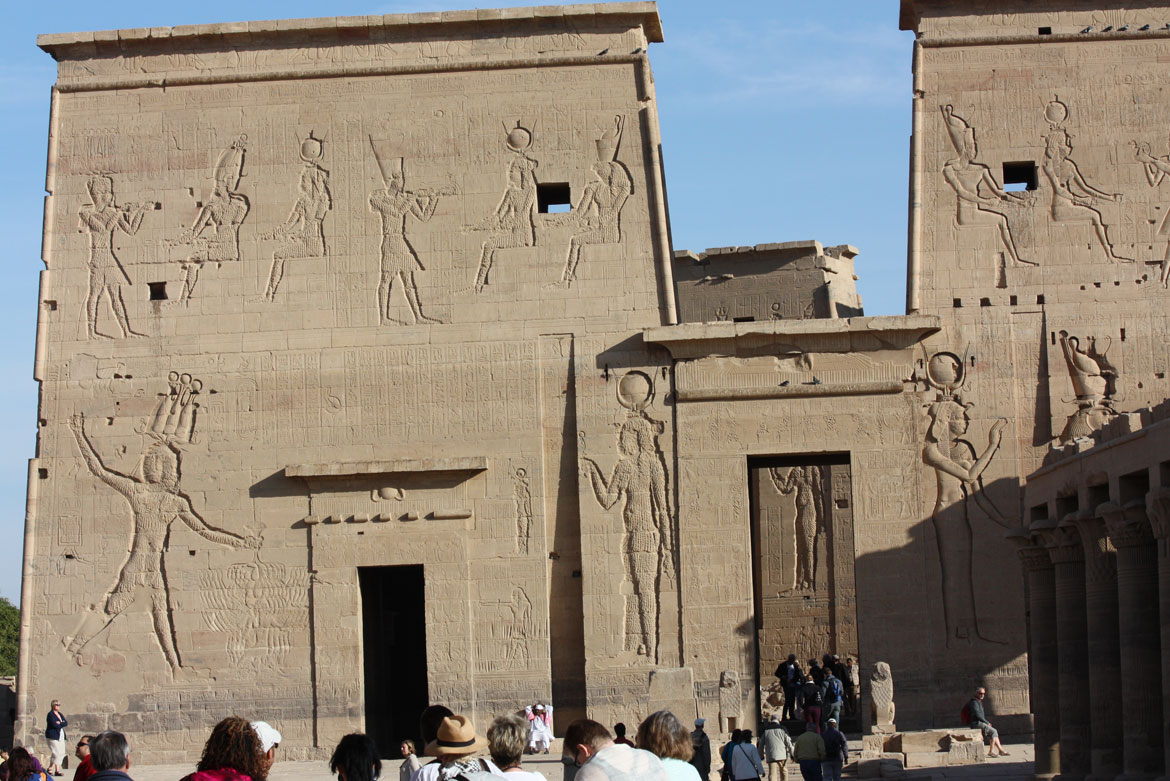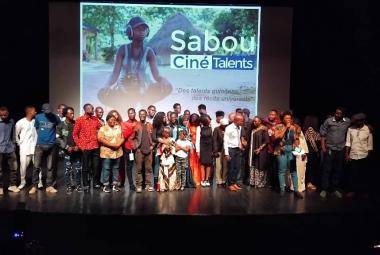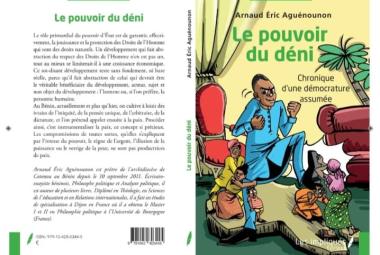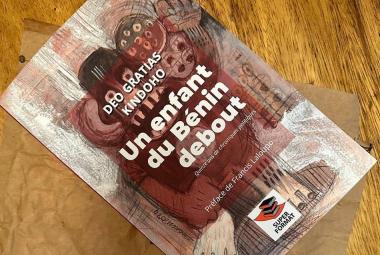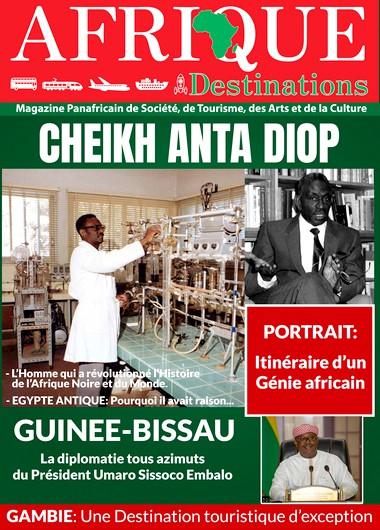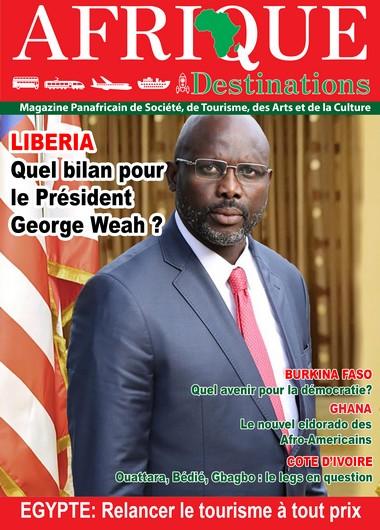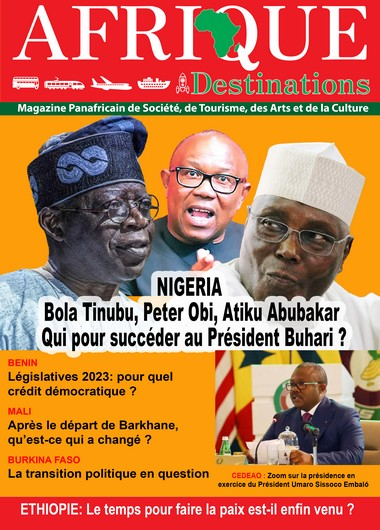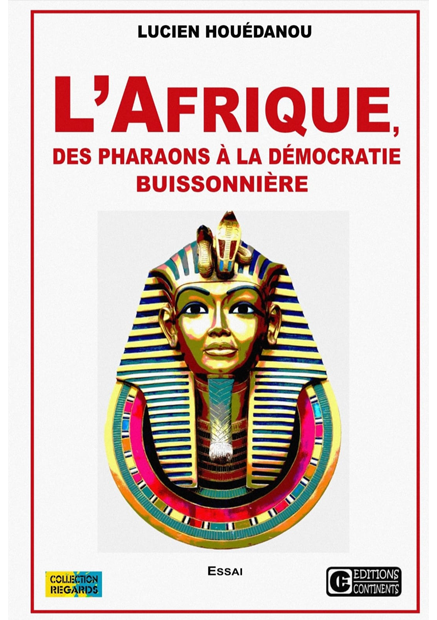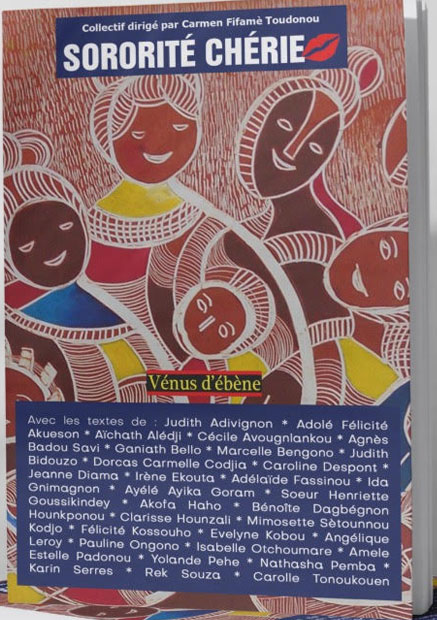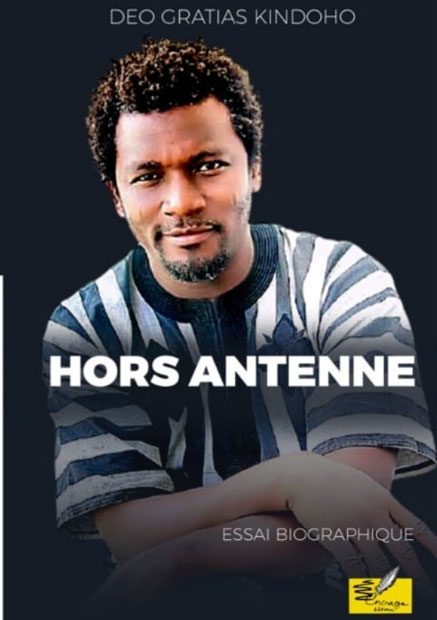From April 28 to July 25, 2022, the Louvre Museum in Paris is holding the exhibition entitled Pharaoh of the Two Lands. The African epic of the kings of Napata. It obviously helps to put a spotlight on Ancient Nubia and its glorious past. And if it did more, thus also offering the opportunity for Egyptology to free itself from certain heavinesses that it has dragged like cannonballs for centuries...
As the Senegalese Souleymane Bachir Diagne, Professor at Columbia University, in the United States, puts it so well:: “The history of Africa has too often been fragmented and written on the basis of many prejudices, mainly European. Egyptian civilization, for example, was considered too brilliant to belong to the African continent. She was therefore released. This vivisection of African history has also cut the continent in two: sub-Saharan Africa and North Africa or, in racial terms, “black Africa” and “white Africa (*1)”.
The history of Ancient Egypt is inseparable from that of the peoples of the Nile Valley and in particular those of Ancient Nubia. However, classical Egyptology had wanted to separate Ancient Egypt from Ancient Nubia. Also, she spoke of BLACK PHARAOHS when Professor Charles Bonnet discovered in Sudan the Pharaohs of the XXV Dynasty who ruled both Egypt and Nubia. But research has evolved since the time when the Negro-African character of ancient Egyptian was denied and Egyptology would benefit today from making downright amends by recognizing that the Ancient Egyptians were blacks from Africa and their Pharaohs too.
It is worth pointing out right away, so that this is clear once and for all, the exhibition at the Louvre Museum in Paris entitled Pharaon des Deux Terres. The African Epic of the Kings of Napata nowhere mentioned the controversial terms BLACK PHARAOHS. Casually, Egyptology is already taking a huge step today. Which is to his credit. But it must go further still…
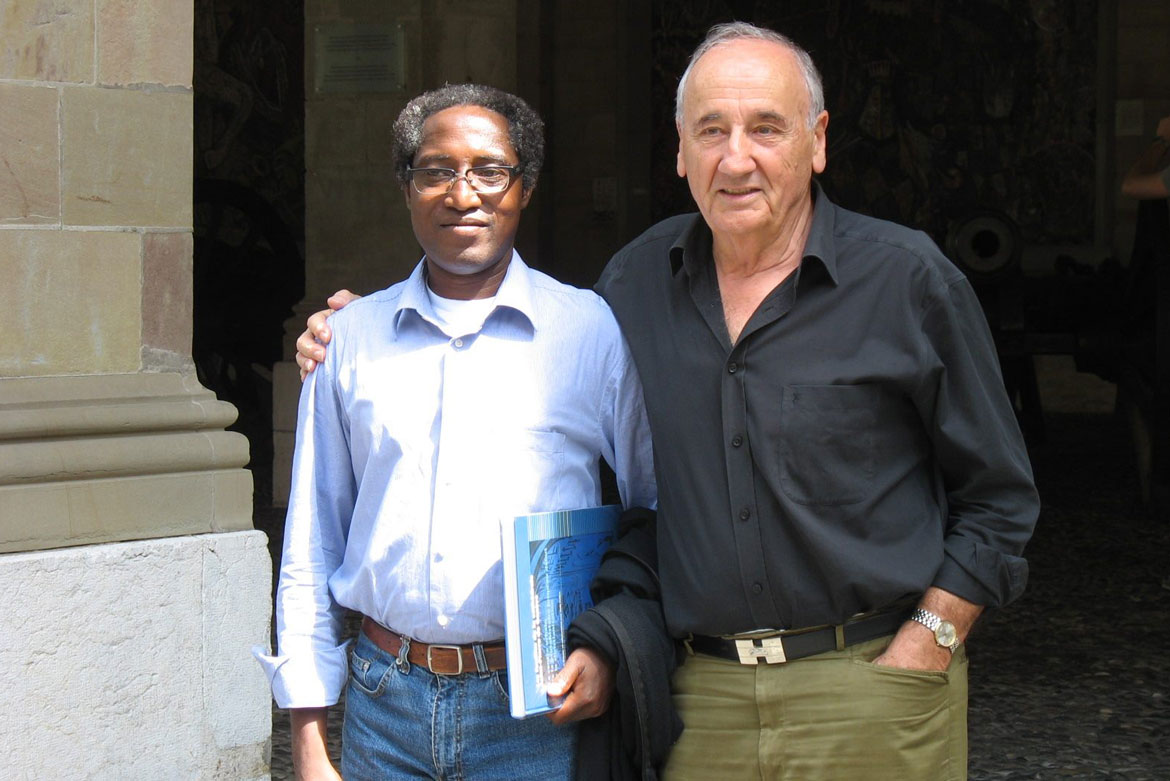
Charles Bonnet was admitted to the Collège de France as Visiting Professor in 1985. Member of the curatorium of the Swiss Institute for Architectural and Archaeological Research in Ancient Egypt, Cairo (Borchardt Foundation) since 1989, he chaired the Scientific Commission of the Swiss-Liechtenstein Foundation for Archaeological Research Abroad from 1998 to 2013.
Even today, Charles Bonnet spends almost half of each year in Sudan where he still continues, despite his advanced age, excavations and the transmission of his archaeological knowledge to Sudanese researchers. He is the Preface to Volume 1 of the series of books by Marcus Boni Teiga on the history of Ancient Nubia: Nubia and the origins of the peoples of Africa I, published by Editions Dagan, in France.
More than a decade ago, since Professor Jean Ziegler introduced me to his Swiss compatriot, Professor Charles Bonnet, Member of the Institut de France (Foreign Associate at the Académie des Inscriptions et Belles Lettres), from the admirer I have become his friend. I dedicate, indeed, a great friendship for the man that he is and a great respect for the immense work that the Egyptologist and the archaeologist accomplished in Sudan. Specifically in KERMA. And, I will never forget that he was the Prefacer of my first essay in this series of historical works which I was about to start publishing in 2013. At the very moment when I was just beginning, and when one could to ask many questions about the results that I proposed to specialists, even if my
preliminary work years before had already edified me and convinced me that I was on the right path.
In Nubia and the origins of the peoples of Africa published by Editions Dagan, in Paris, in 2013, he wrote me a Preface which he concluded with these words : “…We want by these few reflections to show that Marcus Boni Teiga tackles one of the great historical and archaeological enigmas of our time. He does it in his own way which follows the approach of one of his famous predecessors, Cheikh Anta Diop. This "school" is very different from the one I followed but having hardly any other answers, I hope that the proposals brought together here will give the reader the possibility of approaching the complexity of the interpretations developed, which he will pleasure in the presentation of the historical facts of the last centuries which illustrate a long and still obscure process. We can only encourage the author to extend his study, the originality of which is an important complement to a more conventional approach (*2)”..
For having begun his archaeological excavations at the French Institute of Oriental Archeology in Egypt, at the Kellia, at Karnak and at Deir el-Medina in Egypt when I was born in 1966 and for having continued them at Kerma in Sudan at the archaeological mission of the University of Geneva at the time when many still believed that the BLACKS were only BARBARIANS and that they had never reached a level of CIVILIZATION, it had not been a Preface by complacency. That's the least I can say. It is, moreover, with great interest that I follow the results of his excavations at KERMA year after year and this until today. However, and he knows it very well, I formally reject the qualifiers of BLACK PHARAOHS whose discoveries were stamped by classical Egyptology in his time. In my opinion, for ideological reasons, which have long prevailed in Egyptology.
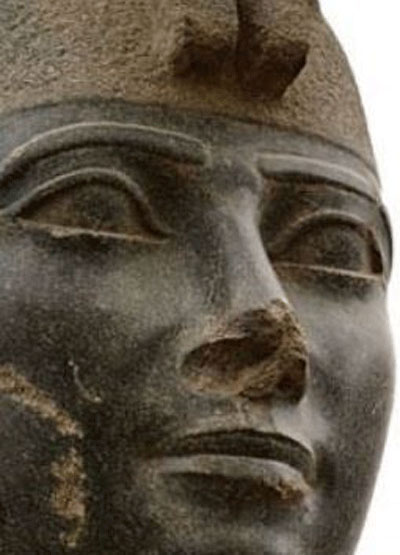
Indeed, I persist and sign to say like my many and illustrious predecessors that ANCIENT EGYPT was a Negro-African Civilization. And I would say even more by insisting on the fact that those who had THAT CULTURE in the NILE VALLEY were necessarily my distant Ancestors. Today, I have more evidence to reaffirm it, after more than a decade of research and publications on this theme, in particular on ANCIENT NUBIA.
We can speak of NUBIAN PHARAOHS or KUSHITE PHARAOHS but never more of BLACK PHARAOHS. Because to speak of BLACK PHARAOHS supposes that there were PHARAOHS who were not BLACK or that the PHARAOHS were WHITE, YELLOW or RED, etc. Professor CHEIKH ANTA DIOP had already demonstrated this. Supporting evidence. And I confirm. CHEIKH ANTA DIOP was right. The Pharaohs of Ancient Egypt were Blacks from Africa. No offense !
Due to late interbreeding, there were certainly MIXED through marriages contracted with women of the royal families of the neighboring countries of Ancient Egypt. Henceforth, it would be necessary to say NUBIAN PHARAOHS or KUSHITE PHARAOHS rather than BLACK PHARAOHS… Otherwise, we will always bring the contradiction on this subject.
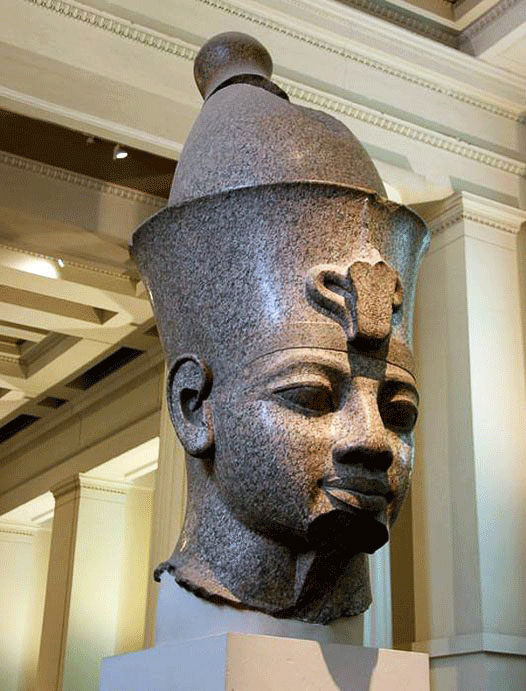
When we take for example the coronation name of the Pharaoh SEQENENRE, it literally means "the KING or the ONE whom RA or RE made STRONG". In other words, in the same current NATENI language:
SE = KING
QEN = STRONG = BRAVE (QEN is a polysemous term which designates in the current NATENI language both "the Strong" or "the Brave", "the Old" or "the Old" or "the Old" and "the Chief" or “the Leader”). And to be able to distinguish the meaning of the word and what we mean, it is absolutely necessary that the phonetics are appropriate. Hence the need to listen to the intonation that goes with this same QEN that can also be written KWEN or KWENI, etc. in the names of NATEMBA in French.
EN = MADE (more literally "appear" as the Sun rises or appears)
RE = THE SUN as GOD
For the record, I have already explained it in an article on the origin of the name SEBASTOPOL to mean the “CITY OF THE TSAR”, that is to say the city of Crimea in Ukraine annexed by Russia. It comes from the Egyptian-Nubian root SEBA (confers: WORLD/HISTORY - SEBASTOPOL: From the origin of this name to authentically Negro-African roots
: https://www.afriquedestinations.com/en/worldhistory-sebastopol-origin-name-authentically-negro-african-roots). This fundamental root is a concept born in the Nile Valley at the time of the first "Agrarian Kings" or "Agrarian Chiefs" and it remains the exclusive prerogative of the ancient Egyptian-Nubian languages from which the current NATENI language derives.
It turns out that the Pharaoh SEQENENRE was of the XVIIth Dynasty and a warrior whose concordant research estimates that he would have died in battle against the Hyksôs. In any case, his mummy does indicate that he succumbed to a violent death. The best known of his sons is Pharaoh AHMOSIS I or AMOSIS for having reconquered all of Egypt and led conquests abroad, particularly in Syria and Nubia.
It was long before the famous Pharaoh AKHENATON whose full coronation name is NEFERKHEPEROURRE-OUAENRE: NEFERKHEPEROURRE "the manifestations of Rê are perfect" and OUAENRE: "The Unique of Rê".
We can extend and epilogue with the current NATENI language as much with the NEFER, the KHEPERU or KHEPEROUR and the OUAENRE. OUA being the ONE and THE UNIQUE, the EN being what appears or results from it and the RE = THE SUN as GOD.
If it is true that it is necessary to be initiated several times and to have had the good fortune to rub shoulders with the Ancients to pass more easily from the current NATENI language to ANCIENT EGYPTIAN (this is the case with the NEFER and the KHEPEROU or KHEPEROUR), it does not remain true that it is enough to be a little attentive to understand it with a panoply of other words which have the same resonance or consonance as those that the NATEMBA of the NORTH-WEST of BENIN REPUBLIC still use on a daily basis. Indeed, my book DICTIONARY OF ANCIENT EGYPTIAN CONCEPTS : The A-Z Indelible Evidence that Ancient Egyptians Were Blacks from Africa published by Editions Complicités, in Paris, on April 26, 2022, has among other objectives to bring these proofs which are indelible. The ANCIENT EGYPTIANS were BLACKS FROM AFRICA, their language was NEGRO-AFRICAN and their PHARAOHS were BLACKS.
A Senegalese colleague, El Hadji Diagola wrote The pharaohs spoke Soninke! (Confers Le Nouvel Afrik.Com: https://www.afrik.com/les-pharaons-parlaient-soninke) and it could have made you smile or laugh. See! Yet... And yet, he is not wrong at all, if you look closely. The Ancient SONINKE are Cousins of the Ancestors of LAKE CHAD from which descend the current NATEMBA. Normal that they share the same linguistic substrate at the origin. Not to mention that from SONINKE comes almost all the ethnolinguistic groups of present-day Mali, and even of other West African countries. Islamization more than interbreeding caused the SONINKE to lose the fundamental roots which are inherent in the so-called animist cults prior to their migration from LAKE CHAD. The book by El Hadji Diagola, journalist and novelist, pays tribute to the work of a student who discovered that the pharaohs spoke Soninké. Unfortunately, this young student died without succeeding in making himself known and left unfinished work. A destiny that could have been mine. I will provide more evidence of this SONINKE-NATEMBA relationship in my next and last historical essay in the series entitled: THE SAO OF LAKE TCHAD: An Ancient and Mysterious Civilization in the Center of Black Africa.
By dint of comparative studies and in-depth research, cross-referencing of oral and written sources and other dating across the African continent and even beyond, the gaps concerning the chronologies of certain departing migrations are being filled. . To finally bring out synchronisms between historical facts and dates. Such is the case of the KISSIRA MIGRATION concerning which the Ancestors of the IJO of NIGERIA have always located the appearance and establishment of migrants on their lands, in the delta of the Niger River in southern Nigeria, in the first half of the 5th century. after Jesus Christ. From LAKE CHAD.
When Professor CHEIKH ANTA DIOP said in his time that the SAO were already in LAKE CHAD around 2300 years BC, many of his Western counterparts laughed at him, taking him for an impostor. And yet, his deductions and decryptions were correct. He is only more accurate when he declared during his 1984 Conference in Niamey in Niger: “You do not have a single former pharaoh with a Semitic profile. The Egyptians were simply blacks. They weren't Semites, they weren't Indo-Europeans. You have seen all the profiles that I have shown you (...) Here is the Semite profile. You don't have a single pharaoh with this profile. It is always represented eh...always eh with a deprivation of freedom. This uh...not important when it comes to all Africans now. But it is all the same to characterize a period and situate History in its true context. Once said, it is almost forgotten. Because today it will be necessary to show the world on
other bases. Each of us must be in full possession of our cultural and ancestral heritage. Huh... And it is only from this cultural plenitude that we can sincerely collaborate without any alienation (*3) ”.
On Tuesday January 18, 2022, on the occasion of the broadcast on France 2 of the Documentary "Blacks in France"*4 by Aurélia Perreau and Alain Mabanckou, the latter had declared in the debate which ensued in particular this:
“The History of Ancient Egypt has been studied by one of the greatest African historians who is not known to the French classes. His name is CHEIKH ANTA DIOP. He wrote "Negro Nations and Culture" (Editor's note: (Nations nègres et culture: De l'antiquité nègre égyptienne aux problèmes culturels de l'Afrique Noire d'aujourd'hui (Negro Nations and Culture: From Egyptian Negro Antiquity to the Cultural Problems of Black Africa Today). All black Americans read it. Why don't we read it in France? Because CHEIKH ANTA DIOP demonstrated that ancient Egypt was Negro. And that if we come to study it in France, all the White Egyptologists will loosen the textbooks they have been writing for hundreds of years. And what are they going to do with their doctorates? »
This declaration prompted me to thank the Franco-Congolese writer and academic Alain Mabanckou for having taken this position through a publication which said this: "In principle, we should not thank Alain Mabanckou for having said it, but a "BIG THANK YOU" all the same... Especially when we know how many dare not say it, not because they are not convinced that it is true, but quite simply for lack of audacity. Because it is no longer the proofs that are lacking today to demonstrate that ancient Egypt was Negro.
Yet…And yet, I know of at least two Academics, one is Senegalese residing in France and the other is Nigerian residing in the United States, who flatly refuse to accept even including supporting evidence that the Ancient Egypt was Negro.
Conversely, fortunately for the rest, many Western Egyptologists like the British James Edward Quibell who was one of the very first to recognize it or the French Emile Amélineau, Constantin-François Chasseboeuf de La Giraudais, Comte Volney , known as Volney (founder of the Louvre Museum in Paris), Jean-François Champollion known as Champollion Le Jeune (decipherer of Egyptian hieroglyphs) and among our contemporaries the Frenchman Philippe Charlier or the American Renée Friedman have formally attested to this.
When Alain Mabanckou speaks of WHITE Egyptologists, it is in my opinion a way of speaking and especially of our contemporaries who are quick to mouth the trumpet to hold a rather nostalgic Egyptological discourse of a bygone past. Number of WHITE Egyptologists having been the only ones at a certain time long before the CHEIKH ANTA DIOP to prove and defend the Negro-African origins of ancient Egypt. “We must render to Caesar what belongs to Caesar; and to God what is God's”.
A certain number of Africans hostile to the West for various reasons, and in particular the Pro-Russian Africans, have a certain propensity to use the original sin of Egyptology as holy bread to manipulate many Africans and try to win over their unspoken cause. However, forgetting that the PAPYRUS VLADIMIR GOLENICHTCHEV also called PAPYRUS OF MOSCOW, one of the oldest documents of mathematical results of ANCIENT EGYPT, is in MOSCOW. And that no Russian Egyptologist, at least to my knowledge to date (maybe I'm wrong), ever said that the ANCIENT EGYPTIANS were BLACKS FROM AFRICA. Moreover, this famous papyrus is in the Pushkin Museum of Fine Arts. A name that says a lot for the BLACKS OF AFRICA. If we want to be honest, even with the controversies and other falsifications, it is the West which has still most defended BLACK AFRICA in matters of Egyptology. And let's not even talk about CHINA, which tried to convince the whole world that Africa was not the Cradle of Humanity but rather CHINA before scientific and genetic studies came to definitively undermine the Dali's theory in Shaanxi province.
CHEIKH ANTA DIOP has indeed demonstrated, with new evidence, that ancient Egypt was Negro. To go further also, I added and I will never stop repeating it enough, supporting evidence, in my book entitled " SPIRITUALITE Pourquoi le Yoga n’est pas né en Inde : les secrets de l’origine des Dravidiens (SPIRITUALITY Why Yoga was not born in India: the secrets of the origin of Dravidiens), Editions Complicités, Paris, 2020” that the ancient Indus Valley was also Negro. And I have invited all Indianists and other Indian scholars who dispute it to bring me the contradiction. I reiterate here this invitation to contradiction. Great migrations have the advantage that they sometimes mark indelibly the links between the territories of departure and those of arrival. Such are the cases of the connections between the NILE VALLEY and the INDUS VALLEY on the one hand and on the other the NILE VALLEY and the NIGER VALLEY. Anything that allows the Natemba from the depths of Benin that I am to speak a language classified by LINGUISTS in the family of Niger-Congolese languages and whose substrate is found today in INDIA (in all its forms of SPIRITUALITY) to be the same both phonetically and semantically, although Cotonou is thousands of kilometers from New Delhi.
With the new research carried out here and there in Africa and the resulting discoveries, we can now conclude that as the English would say: "Game is over". No one would make us believe that the Ancient Egyptians were other than Blacks from Africa. Especially since we have indelible evidence available to any researcher, regardless of origin and skin color. Of which act!
By Marcus Boni Teiga
Email : bonimarcus@gmail.com
*1 - Chantal Cabé, Souleymane Bachir Diagne : “L’histoire de l’Afrique a été écrite sur la base de préjugés”, La Vie, Publié le 03/08/2020 à 10h22 I Mis à jour le 03/08/2020 à 16h19 : https://www.lavie.fr/idees/debats/souleymane-bachir-diagne-lhistoire-de-lafrique-a-ete-ecrite-sur-la-base-de-prejuges-1578.php?fbclid=IwAR18dN1B46B_wlmZmsBssp5DqeTwjtHCTVvkoKHCKhSFIekDmgH3XZU3sR4
*2 - Marcus Boni N'Piénikoua Teiga, La Nubie et les peuples d'Afrique. Vol. 1, Série(s) : La Nubie et les peuples d'Afrique, Collection(s) : D'un monde à l'autre & d'une époque à l'autre, Contributeur(s) : Préfacier : Bonnet, Paru le : 01/03/2013, Editions Dagan
*3 - Cheikh Anta Diop, Conférence de Niamey au Niger, 1984 : https://www.youtube.com/watch?v=TzIEn60nGbU
*4 - Aurélia Perreau, Alain Mabanckou, Noirs en France : https://www.franceinter.fr/culture/noirs-en-france-un-documentaire-diffuse-sur-france-2-le-18-janvier-2022-a-21h10
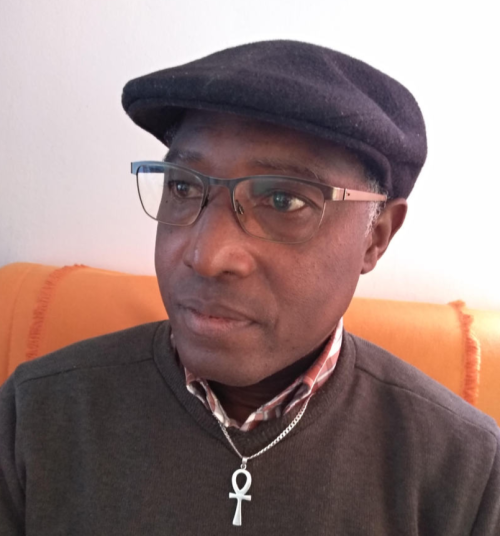
béninois, spécialiste de la Nubie Antique.
BIOGRAPHYJournalist and writer, Marcus Boni Teiga is from Tanguiéta, in the Department of Atacora, in the North-West of Benin. He is also one of the antiquarians and best specialists in Nubian studies.
Poet, playwright, novelist and essayist, he is the author of several books. His novel The Phantom of Cotonou was awarded Best Edition 2016 at the Abidjan International Book Fair (SILA) and among the last five finalists for the Ivory Prize for African Literature of Francophone Expression in 2016 out of the 51 participants.
Winner of the Imhotep International Prize in 2014 at the Pan-African Book Fair in Brussels for all of his work on ancient Nubia, winner of the Reuters scholarships in journalism in 1994 and Reuters Fellow at the Media Studies Center of the Michel University of Montaigne from Bordeaux 3, France, he was Secretary General of the National Community of Voodoo Worship and Traditional Religions of Benin in the late 1990s.
Since 2014, he has resided in Spain but continues his research focused on ancient Black Africa while giving lectures in many countries, particularly in Africa and Europe.
BIBLIOGRAPHY
- Sambiéni, le roi de l’évasion Enquête sur la vie et la mort d’un mystérieux gangster (Récit), Editions Golfe Livres, Cotonou, 1995 (Sambieni, the King of the Escape Investigation of the life and death of a mysterious gangster (Narrative), Editions Golfe Livres, Cotonou, 1995)
- Quelle démocratie pour l’Afrique ? (Essai), Editions Cerfod, Cotonou, 2000 (What kind of democracy for Africa? (Essay), Editions Cerfod, Cotonou, 2000)
- Magnificences de l’Atacora-Donga (Recueil de poèmes), Editions Teiga, Cotonou, 2005 (Magnificences of the Atacora-Donga (Collection of Poems), Editions Teiga, Cotonou, 2005)
- Journalisme 2.0 Nouvelles formes journalistiques, nouvelles compétences, Editions La Documentation Française, Paris, 2012, (Ouvrage collectif sous la direction de Rémy Le Champion) (Journalism 2.0 New journalistic forms, new skills, Editions La Documentation Française, Paris, 2012, (Collective work under the direction of Rémy Le Champion)
- La Nubie et les origines des peuples d’Afrique I (Essai), Editions Dagan, Paris, 2012 (Nubia and the origins of the peoples of Africa I (Essay), Editions Dagan, Paris, 2012)
- La Nubie et les origines africaines des peuples, des langues et des religions du monde II (Essai), Editions Dagan, Paris, 2013 (Nubia and the African origins of peoples, languages and the religions of the world II (Essay), Editions Dagan, Paris, 2013)
- Kaba, le Héros et la Légende (Théâtre), Editions Teiga, Cotonou, 2013 (coécrit avec Michel Nahouan) (Kaba, the Hero and the Legend (Drama), Editions Teiga, Cotonou, 2013 (co-written with Michel Nahouan)
- La Nubie et les origines de la langue mère unique III (Essai), Editions Dagan, Paris, 2014 (Nubia and the origins of the single mother tongue III (Essay), Editions Dagan, Paris, 2014)
- Docteur Giambattista Priuli dit Docteur Florent Une vocation d’exception au service de l’Afrique (Entretiens), Editions Teiga, Cotonou, 2015 (Dr. Giambattista Priuli says Dr. Florent An exceptional vocation in the service of Africa (Interviews), Editions Teiga, Cotonou, 2015)
- Le fantôme de Cotonou (Roman), Editions Nei/Ceda, Abidjan, 2016 (The Ghost of Cotonou (Novel), Editions Nei / Ceda, Abidjan, 2016)
- L’Egypte antique et la vallée du Nil L’histoire cachée de l’origine négro-africaine des Egyptiens anciens, (Essai), Editions Complicités, Paris, 2018 2018(Ancient Egypt and
the Nile Valley The hidden history of the Negro-African origin of the ancient Egyptians (Essay), Editions Complicités, Paris, 2018) - Patrimoine Le legs de l’Afrique noire à la Grèce et la Rome antiques, Editions Complicités, (Essai), Paris, 2019 (Heritage : The Legacy of Black Africa to Ancient Greece and Rome (Essay), Editions Complicités, Paris, 2019)
- La Nubie et la migration Kissira, Editions Complicités, (Essai), Paris, 2020 (Nubia and Kissira migration, (Essay), Editions Complicités, Paris, 2020)
- Inde : Pourquoi le Yoga n’est pas né en Inde ; Les secrets de l’origine des Dravidiens, Editions Complicités, (Essai), Paris, 2020 (India: Why Yoga was not born in India; Secrets of the Origin of the Dravidians, (Essay), Editions Complicités, Paris, 2020)
- Israël ancien : les origines des prêtres Yahoud et la naissance du judaïsme, Editions Complicités, (Essai), Paris, 2020 Ancient Israel: the origins of the Yahoud priests and the birth of Judaism, (Essay), Editions Complicités, Paris, 2020)
- Le Bénin : Comprendre en 100 questions-réponses la gouvernance de Patrice Talon, Editions Complicités, (Essai), Paris, 2021 (Benin: Understanding the governance of Patrice Talon in 100 questions and answers, (Essay), Editions Complicités, Paris, 2021)
- Ghana-Burkina Faso : Aux origines des Moose et peuples apparentés, éditions Complicités, Editions Complicités, (Essai), Paris, 2021 (Ghana-Burkina Faso: At the origins of the Moose and related peoples, (Essay), Editions Complicités, Paris, 2021)
- Le Flamenco: Une musique andalouse aux racines indo-africaines, Editions Complicités, (Essai), Paris, 2021 (Flamenco: Andalusian music with Indo-African roots, (Essay), Editions Complicités, Paris, 2021)
- Kébayo,le dernier des Nubiens (Roman), Editions Amaya, Libreville, 2021 (Kébayo, the last of the Nubians, (Novel), Editions Amaya, Libreville, 2021)
- Dictionnaire des noms ancestraux de l’aristocratie dans l’Egypte antique (Pharaons, Reines, Princesses, Princes et Nobles), Editions Complicités, (Essai), Paris, 2021 2021(Dictionary of the ancestral names in ancient Egypt : Pharaohs, Queens, Princesses, Princes and Nobles, (Essay), Editions Complicités, Paris, 2021)
- Dictionnaire des concepts de l’Egypte antique : les preuves indélébiles de A à Z que les Egyptiens anciens étaient des Noirs d’Afrique, Editions Complicités, (Essai), Paris, 2022 (Dictionary of Ancient Egyptian Concepts, (Essay), Editions Complicités, Paris, 2022)
Forthcoming :
- LES SAO DU LAC TCHAD Une Civilisation antique et mystérieuse au Centre de l’Afrique Noire), Editions Complicités, (Essai), Paris (THE SAO OF (LAKE CHAD An ancient and mysterious civilization in the center of Black Africa, (Essay), Editions Complicités, Paris)



